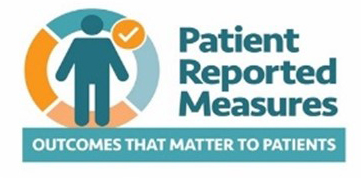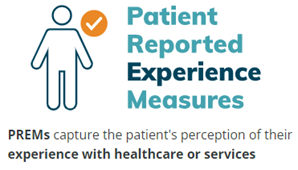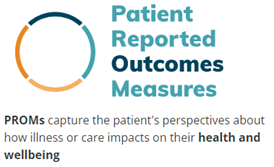Virtual Care
Wendy Roulston - Manager Virtual Care
Ph: 0438 497 318 Email:
NNSW LHD is embarking on an ambitious journey across the next five years to integrate Virtual Care across the health system.Virtual Care (VC), also called Telehealth, is delivered in combination with face to face care across the patient’s health journey.
What is happening now?
We are developing a VC Strategy and Action Plan to guide implementation of short, medium, and long-term goals by 2026. Short-term goals include educating our staff, rolling-out VC models across outpatient services and building our technical foundations. Medium-term goals include partnering to design remote monitoring, and our long-term goal is working towards integration of technologies and systems.
Partnering to improve care in the community
Future planning for remote monitoring includes coordination of care in partnership with patients and their GPs. The benefits include:
- Improving discharge planning for patients with chronic disease
- Enabling patient self-managed care and autonomy
- Improving medication management and other treatments
- Coordinating access to specialised care
- Supporting end of life discussions
Highlighting VC in Community Health
Community Health is actively using VC. Notably the Dementia Outreach service, Cardiac Rehabilitation service, Palliative Care service and Virtual Covid Care.
Clinicians use VC in combination with face to face care to benefit patients:
- Improving choice with care delivered regardless of location
- Reducing unnecessary travel and associated costs
- Improving access for patients in rural and remote areas
- Reducing stress and disruption to everyday life
- Improving health literacy, links carers and families, interpreter services, and primary care providers
- Supporting patients who choose to die at home
Going beyond an eReferrals trial in NNSWLHD
Tim Marsh – Manager – eHealth Solutions
Ph: 66200829 Email:
GPs in Northern NSW may be familiar with Northern NSW Local Health District’s (NNSWLHD) eReferrals service. Commenced in June 2020, it made eReferrals available on a trial basis to the Lismore Base Hospital Medical Specialty Outpatient Department, the Pain Clinic, and some Community and Allied Health services. At the same time, the LHD started using a basic Referral Management System to receive and respond to eReferrals.
In the past two years, over 4,000 eReferrals have been sent by GPs, and GP and LHD staff feedback has been overwhelmingly positive.
Based on the success of this trial, NNSWLHD was selected as a pilot district to help design and build a NSW state-wide electronic Referral Management System (“eRMS”). The eRMS will combine all external referrals – fax, eReferral, phone, paper, walk-in – in one place so all referrals are managed consistently and to help reduce the use of paper.
NNSWLHD built a secure, innovative AI-based solution in the LHD’s private Azure Cloud to handle faxed referrals. Fax documents for services included in the project are digitised, analysed (using Microsoft’s AI-based Forms Recognizer Optical Character Recognition (“OCR”) tool and based on a custom NNSWLHD model), then either sent to the eRMS or a service’s generic email for non-referrals.
A key component of the fax process involves the use of NNSWLHD’s new Fax Referral Cover Sheet, which has been required for all faxed referrals to NNSWLHD Outpatient, Community and Allied Health services since August 1, 2022.
As well as standardising the information the LHD receives for all external referrals, the cover sheet means all required fields are automatically transcribed into the eRMS with limited human input, saving substantial administration time. This amounts to 5-10 minutes per referral, which is time administration staff can spend on other tasks, like calling and booking patients.
Ideally, the LHD would prefer to receive eReferrals as they are faster for referrers to send and more secure. However, fax needs continued support in the near to medium term as it continues to be heavily used by referrers, even to LHD services which have had eReferrals available for two years.
The Project Lead for NNSWLHD Tim Marsh said, “Fax has been around for a long time and is easy to use at both ends. We think successfully switching to eReferrals will depend on two main factors: firstly, more LHD services being made eReferral-capable, and secondly, time. It will take time for the LHD to extend eReferrals to more LHD services, and pair that with communication to GPs to help shift their usual process of writing referrals to the LHD from “Letter Writer” and instead remember “referrals to the LHD are via eReferrals.”
The eRMS positions Northern NSW Local Health District to extend eReferrals and electronic referral management to more services pending a local evaluation. This means GPs will have access to more LHD services via eReferrals over time and allow referrers and the LHD to lessen the reliance on fax for referrals.
Patient Reported Measures
Rebecca Davey – Manager Leading Better Value Care
Ph: 04281670349 Email:
What are Patient Reported Measures (PRMs)
Patient Reported Measures capture what matters to a patient in their life. It enables the patient to provide direct timely feedback to their healthcare professional about outcomes and experiences that are important to them. It also enables a consistent and structured method to capture and use Patient Reported Measure Outcomes and Experiences in real time. This information will also support services to identify opportunities to improve outcomes overtime.
The acronyms you need to know!
PRMs - Patient Reported Measures
“Providing a sustainable health system that delivers outcomes that matter to patients, is personalised, invests in wellness and is digitally enabled"

Quick Facts
PROMIS29:
What is it?
A health-related quality of life PROM consisting of 29 questions
What’s it for?
To provide an overall summary of Physical, Mental and Social well being
What does it measure?
Seven health areas:
- Physical function
- Fatigue
- Pain interference
- Pain intensity
- Sleep disturbance
- Depression
- Anxiety
- Ability to participate in social roles and activities
Why is it useful?
- Identifies and formalises the patient’s own health perceptions
- Measures change from a patient’s personal perspective
- Helps prioritise rehabilitation goals that are most important to the patient
- Identifies areas of need that may benefit from additional support or referral
How is it calculated?
Via the HOPE platform (The system used to store and manage the online surveys) with results available for clinicians in real-time.
Clinician Story
“PRMs provide a great simple visual indication of areas of improvement to share with clients along their treatment [and] a great opportunity to discuss anxiety and depression symptoms with clients and suggest referral to social work for appropriate support.
I am really keen to get PREM responses from my client group in order to evaluate the service”
What Next?
Plans for late 2023 will include the full integration of PRMs into eMR/CHOC. This will significantly improve the usability, accessibility and integration of PRMs throughout the health system.
Following this, future plans are being made for integration into the desktop clinical software – Best Practice and Medical Director. GP’s will have the opportunity to add their patients from their practice and can view completed surveys that may have been completed in other health settings, i.e. LHD.
PRMs follow the patient and General Practice is a key partner in the patient’s health.


Osteoporosis Refracture Prevention
Craig Knox - Fracture Liaison Coordinator
Ph.6624 0378 Email:
In 2018, the then PHN (now Healthy North Coast) and Northern NSW Local Health District (NNSWLHD) formed an interdisciplinary synergy to trial a novel GP-led model of care for Osteoporosis Refracture Prevention (ORP) for bone health management after Minimal Trauma Fracture (MTF).
People over the age of 50 presenting to Emergency Departments with a MTF in the Richmond Network were referred by a Fracture Liaison Coordinator to their GP for bone health investigations and ongoing management.
From December 2018 to 2020, 665 patients with MTF were referred to their GP, 645 (97%) were reviewed, and 389 (60%) initiated Bone Protective Therapy (BPT). At 12 months, 351 people (90%) remained adherent to BPT, and 6% had endured re-fracture. 189 GPs were engaged in ORP assessments with wide geographical coverage.
So far, the trial has shown that this novel collaborative model between general practice and a hospital-based Fracture Liaison Coordinator provides an alternative to tertiary specialist-led clinics, showing a high level of acceptance and BPT adherence by patients. Longer-term outcomes and comparison to specialist services should be explored.
Health care stakeholders and service providers are currently being interviewed to examine how and why this model of care has been so successful in this regional area. There will be a follow-up article revealing the results of these interviews.
A big thanks goes to all GPs who ably responded to the communications from the Fracture Liaison Coordinators. Patient care appears timely and effective for this cohort during this proof of concept phase.















